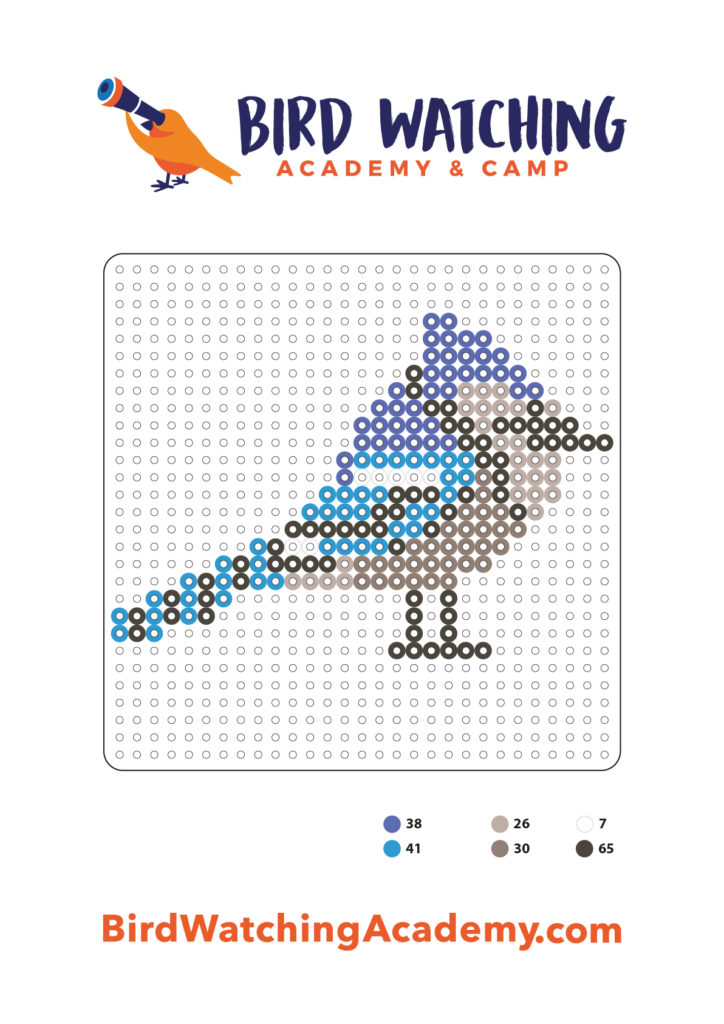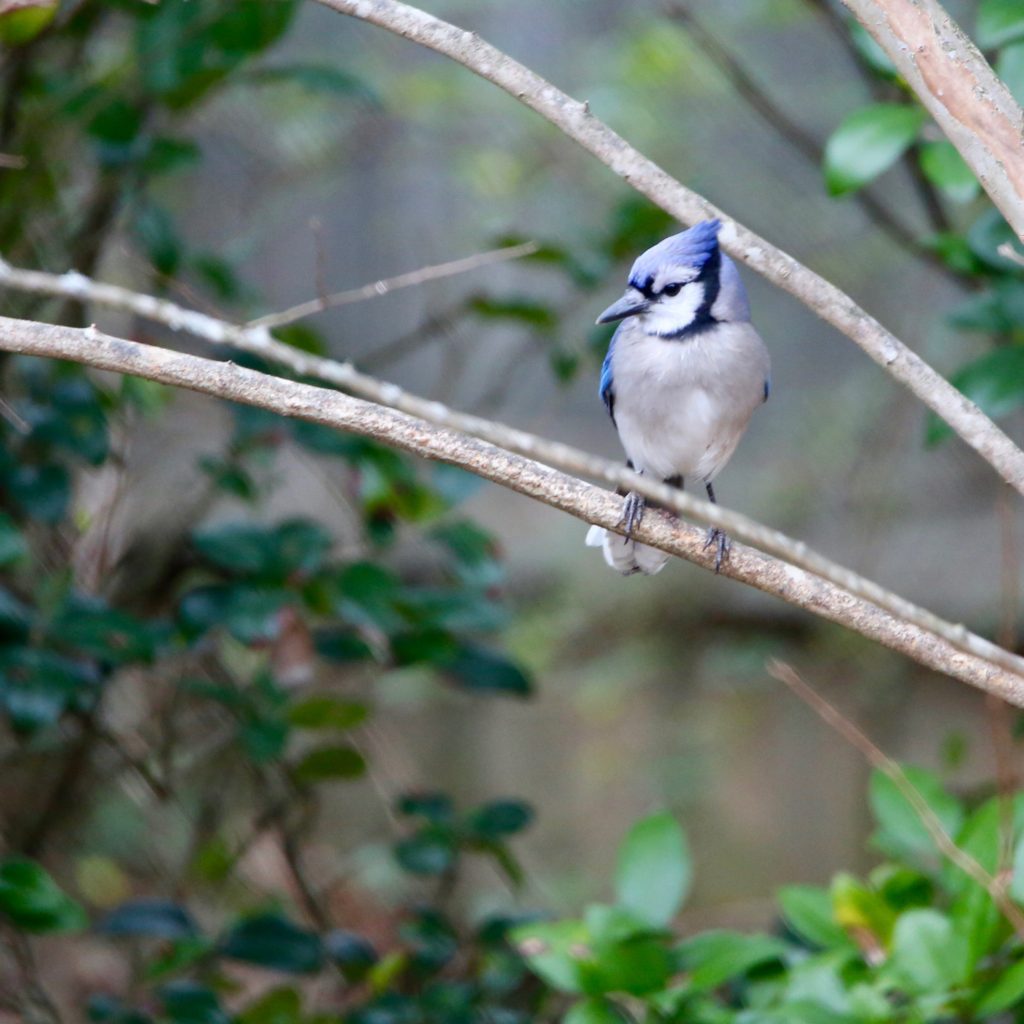
Blue Jay
A Blue Jay is a fun bird to see while bird watching. Below are some tips to help you identify Blue Jays. We have also put together a list of fun Blue Jay t-shirts, Blue Jay bird patches, birdhouses, bird feeders, binoculars, stickers, and other fun bird-watching items.
About Blue Jays
The Blue Jay (Cyanocitta Cristata) is one of the loudest and colorful backyard birds belonging to the crow family, a family of birds that have been around for over 25 million years. Native to North America, this bird is resident through most of the Eastern and Central United States.
Blue Jays Color Pattern
The Blue Jay bird has a color pattern of white or grey underneath its belly with plumage of shades of blue, black, and white at the top of its head.
Description and Identification
Blue Jays measure approximately 22-30 cm from bill to tail and weigh 70-100g with a 34-43 cm wingspan. With a pronounced crest on the head, a crown of feathers raises or lowers as per the bird’s mood. When the birds are excited or aggressive, the crest is raised. However, when frightened, the crest bristles outwards. And, when the bird is resting or feeding with other jays, the crest is flattened. Crest, back, wings, and tail is lavender-blue, while its face is white. The underside of the Blue Jays is off-white, and the neck is collared with black, which further extends to the size of the heads. The bill, eyes, and legs are all black, whereas the wing primaries and tail are strongly barred with white, sky-blue, and black.
The coloration of Blue Jays is not derived from pigments; rather, it’s the result of light interference due to the feathers’ internal structure.
Blue Jays Size
This bird is relatively small and is almost the same size as a Western Scrub-Jay.
The relative size for both sexes is:
- Length: 9.8-11.8 in (25-30 cm)
- Weight: 2.5-3.5 oz (70-100 g)
- Wingspan: 13.4-16.9 in (34-43 cm)
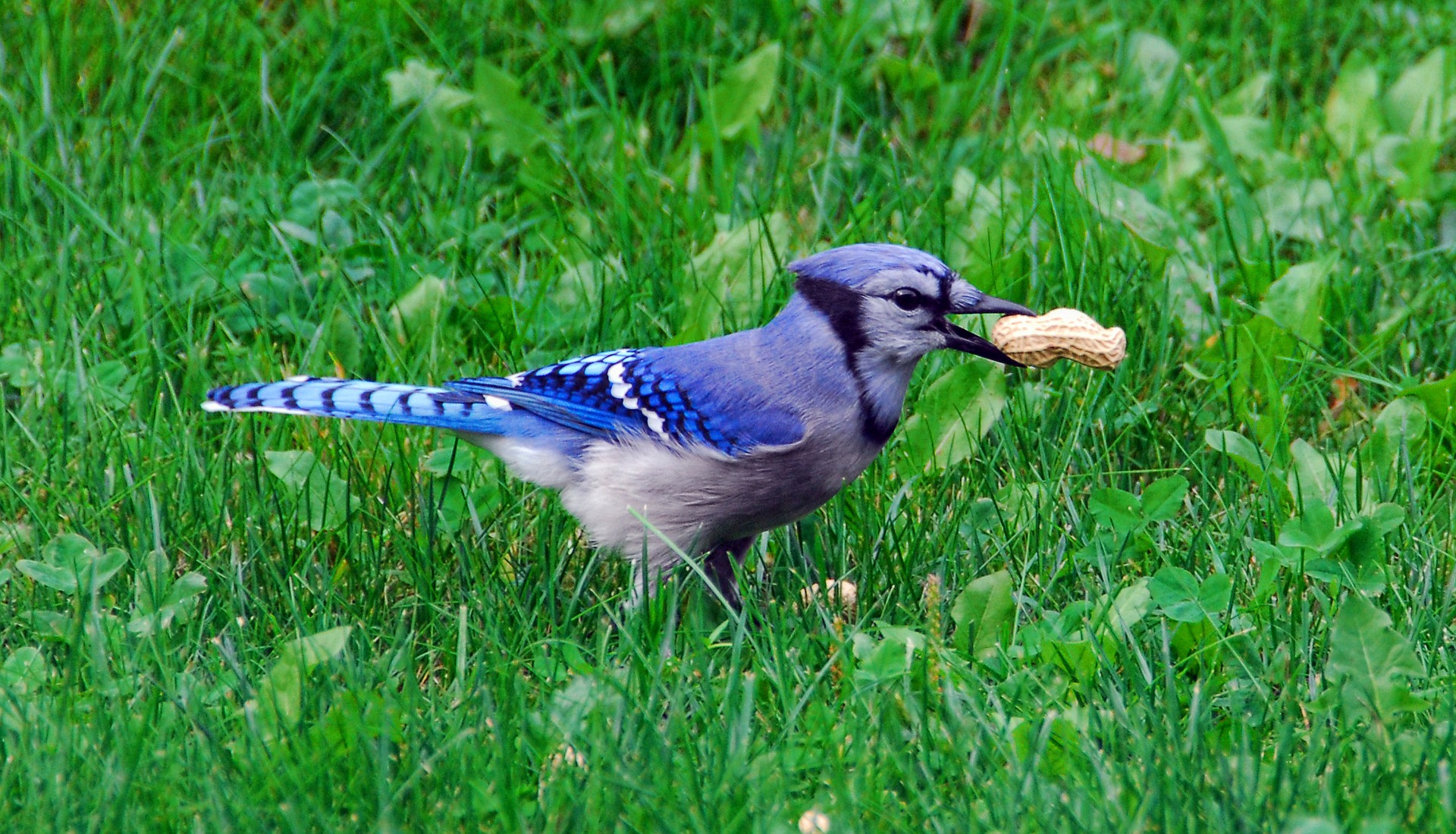
Blue Jays Behavior
- The Blue Jaybird is famously known for its ability to produce a variety of calls that can be carried through long distances. The bird often makes these noises when it is perched upon a tree.
- Also known for its aggressive and territorial nature often attacking intruders and predators.
What Blue Jays Eat
Blue Jays use their strong black bills to crack nuts for eating corn, grains, and seeds. Their food is sought both on the ground and trees, which includes all known types of plants and animal sources, such as corns, fruits, and other berries, grains, bread, meat, small invertebrates, scraps in town parks, bird-table food, beech mast, and weed seeds. At times, blue jays, cache food, it differs to what extent among individuals. In Florida, Blue Jays are dominated at feeders by Eastern grey squirrels, Florida scrub jays, read-head woodpeckers, and common grackles.
The Blue Jaybird is omnivorous mainly eating seeds, nuts, fruits, frogs, mice, and insects. It also sometimes eggs and young birds that it rummages for in neighboring nests.
You can see Blue Jay’s foraging in trees and shrubs and on the ground, visiting feeders and around ponds.
The Blue Jay is a harvester and a food spreader. For instance, with acorns, it often buries them in the ground for later.
Where Blue Jays Live and Their Habitat
These birds occupy various habitats in their large range, be it the pine woods of Florida or spruce-fir forests of Northern Ontario. Blue Jays are typically found in all kinds of forests, especially near oak trees. In deep forests, these birds are found in abundance near forest edges. Blue Jays are common in urban and sub-urban areas, notably near oak trees or bird feeders. Blue Jays breed in deciduous or mixed woods and avoid purely coniferous forests.
This crow descendant is a bird of the forests. They are often found near oaks, in forests, woodlots, towns, cities, parks.
Blue Jay Lifecycle
The female Blue Jay lays about four to six eggs that are incubated by both sexes for 17 days. Young Blue Jays leave the nest after these 17 days and are ready to fly around and hunt for some meals.
Nesting
Blue Jays build their nest in the outer branches of a deciduous or coniferous tree or the crotch, usually 10-25 feet above the ground. Male and female get together to gather materials for the nest, but on average, males do more of gathering whereas females do more building. Only the females incubate, and her mate provides all the food during incubation. The mating season of these birds begins in mid-March, peaks in mid-April to May, and extends to July. Blue Jays form monogamous pair bonds for their life. They build their nest together, rear the young, and only the females brood them. After the juvenile fledges, the family travels and forages together until early fall, when the younger ones disperse to avoid competition for food during the winter.
Range and Migration
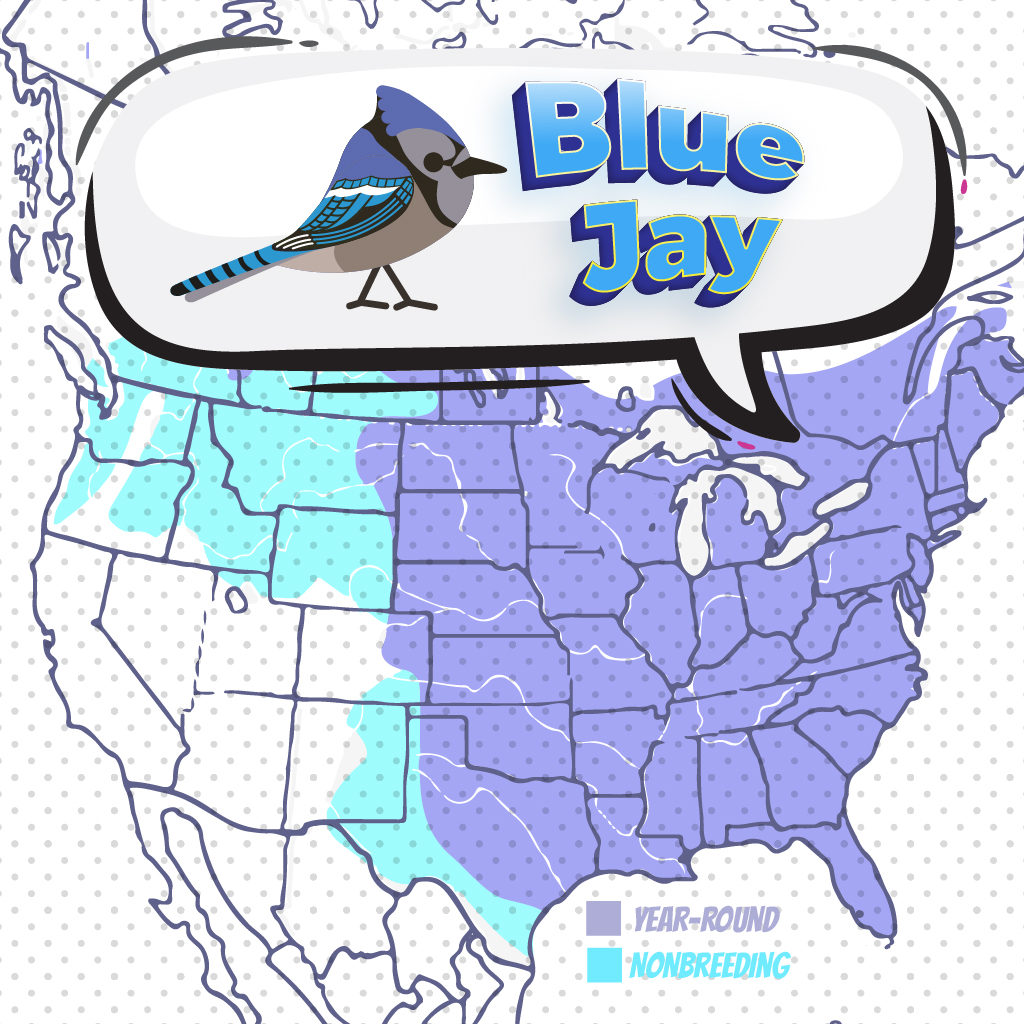
Belonging to the family of Corvidae, Blue Jays are native to eastern North America. These birds live in most of the eastern and central United States, though the eastern population might be migratory. Resident Blue Jays are also found in Newfoundland and Canada. In southern Canada, you can find the breeding populations. Variable numbers of Blue Jays migrate to the south in fall. The birds migrate by day and do not go to the south of the United States. Thousands of Blue Jays migrate in flocks along the Great Lakes and Atlantic coasts. It is likely for Blue Jays to migrate south one year and stay north the next winter.
Anatomy of a Blue Jay
Anatomy is the study of animals or other organisms and their parts. Bird Anatomy is the study of birds and their parts. Birds have beaks, wings, talons, feathers, and other parts that are important to learn about. Learning about bird anatomy will also help kids learn how to identify birds. We focus on the exterior, external, or outside anatomy of birds to help kids learn how to identify them.
Some other types of bird anatomy are the skeletal system, muscular system, circulatory system, respiratory system, and digestive system. Birds also have reproductive systems, nervous systems, and immune systems. Birds are amazing creatures.
FREE PRINTABLE BIRD ANATOMY INFOGRAPHIC
Here is a fun printable design to help kids learns about Blue Jays.
CLICK HERE TO DOWNLOAD AND PRINT THIS FILE Bird Anatomy Blue Jay
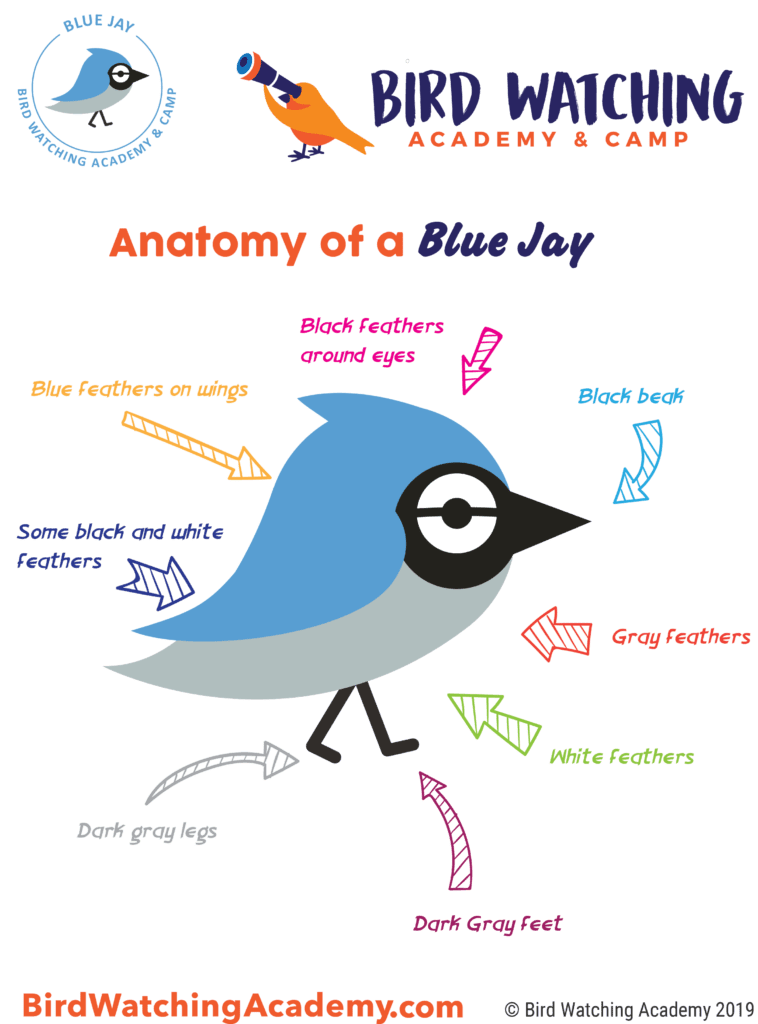
Below is a blank copy to test your kids on the bird anatomy of a Blue Jay.
CLICK HERE TO DOWNLOAD AND PRINT THIS BLANK TEST FILE Bird Anatomy Blue Jay Test
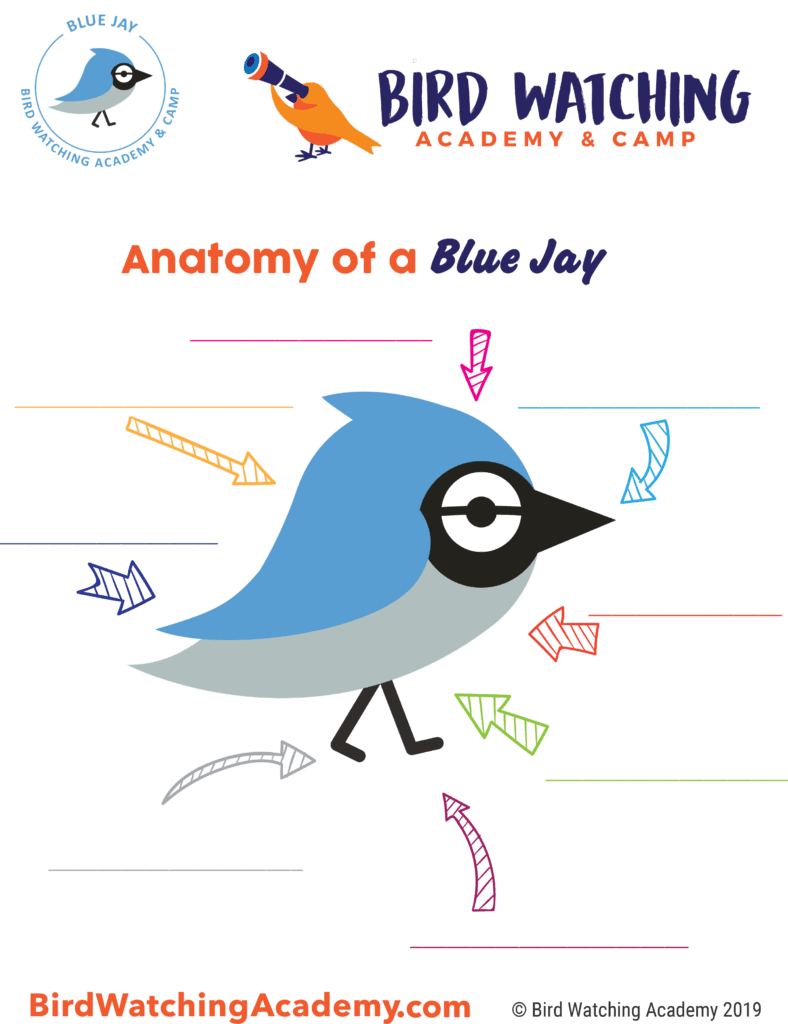
Ornithology
Bird Watching Academy & Camp Subscription Boxes
At Bird Watching Academy & Camp we help kids, youth, and adults get excited and involved in bird watching. We have several monthly subscription boxes that you can subscribe to. Our monthly subscription boxes help kids, youth, and adults learn about birds, bird watching, and bird conservation.
Bird Watching Binoculars for Identifying Blue Jays
The most common types of bird-watching binoculars for viewing Blue Jays are 8×21 binoculars and 10×42 binoculars. Bird Watching Academy & Camp sells really nice 8×21 binoculars and 10×42 binoculars. You can view and purchase them here.
Blue Jay 3D Paper Craft Model
This Blue Jay 3D papercraft model is a great way to learn about birds and have fun doing it. This model is like a puzzle where you have to connect the pieces together. It is designed for adults or skilled crafty teens. The difficulty level is medium to hard but is fun.
- Blue Jay 3D Paper Craft ModelProduct on sale$4.99
Blue Jay T-shirts
If you love the Blue Jay you should purchase a Bird Watching Academy & Camp T-shirt. To help support bird conservation we donate 10 percent to bird conservation activities.
Blue Jay Iron On Patches
Kids, Youth, and Adults love to collect our Bird Watching Academy & Camp iron-on patches. Our bird-watching patches help you keep track of the birds you have seen and identified. You can also display the patches on our Bird Watching Academy & Camp banners.
The Blue Jay is a great iron-on patch to start your collection with. The patches are durable and can be sewn on or ironed on to just about anything.
Blue Jay Stickers
Stickers are a great way for you to display your love for bird watching and the Blue Jay. Here is the sticker pack we sell with a Blue Jay sticker.
Bird Feeders For Blue Jay
There are many types of bird feeders. Here are our favorite bird feeders for your backyard. We use all of these bird feeders currently. Kids will have a great time watching birds eat at these bird feeders. Using this collection of bird feeders will provide a wide variety and many types of birds.
Best Bird Houses for Blue Jay
There are many types of birdhouses. Building a birdhouse is always fun but can be frustrating. These 4 birdhouses have become our favorites. Getting a birdhouse for kids to watch birds grow is always fun. We spent a little extra money on these birdhouses but they have been worth the higher price and look great.
Blue Jay Activities for Kids
We thought a fun perler bead pattern would be fun for kids. Please download and print with 100% scale to fit perfectly with perler bead patterns.
